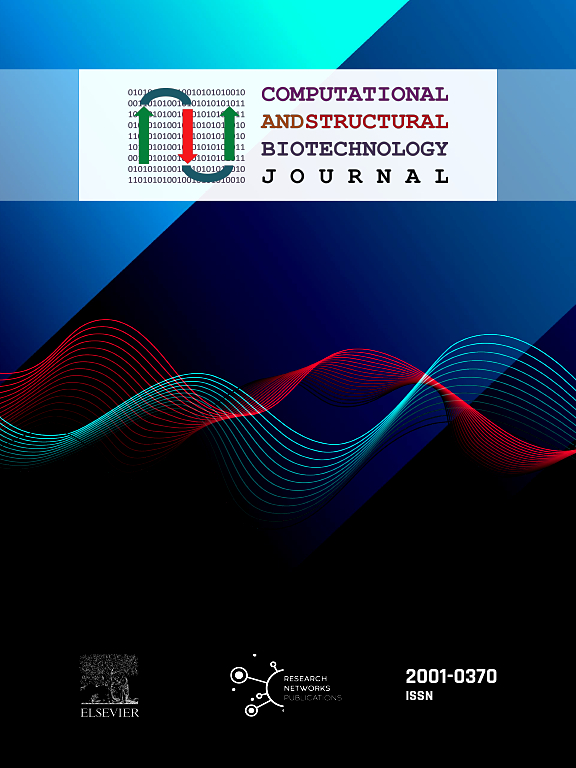用DoseRider在通路水平上建模组学剂量反应
IF 4.4
2区 生物学
Q2 BIOCHEMISTRY & MOLECULAR BIOLOGY
Computational and structural biotechnology journal
Pub Date : 2025-01-01
DOI:10.1016/j.csbj.2025.04.004
引用次数: 0
摘要
omics数据集的生成已成为现代药理学和毒理学研究的重要方法,因为它可以提供大规模的机理和定量信息。对这些数据的分析经常显示出非线性的剂量-反应关系,这突出了建模过程对推断生物暴露限度的重要性。目前已开发出许多剂量-反应建模工具,并定义了各种阈值作为物质效应的定量表示,如有效浓度或基准剂量(BMD)。在此,我们介绍一种易于使用的网络应用程序 DoseRider 和配套的 R 软件包,用于线性和非线性剂量反应建模,以及使用广义混合效应模型在生物途径或特征水平上评估 BMD。这种方法可以分析定制或提供的多组学数据,如 RNA 测序或代谢组学数据及其来自不同物种的通路和基因组集合注释。此外,我们还引入了趋势变化剂量(TCDs)的概念,作为从复杂剂量反应曲线中得出的效应的数字描述符。通过使用化学和遗传扰动基因组(MSigDB)分析 8 种不同浓度的双酚 AF(BPAF)处理人类乳腺癌细胞系(MCF-7)的 RNA 测序数据,证明了 DoseRider 的可用性。双酚 AF 和一组乳腺癌雌激素上调基因的 BMD 为 0.2 µM (95 %-CI 0.1-0.5 µM),最低 TCD (TCD1) 为 0.003 µM (95 %-CI 0.0006-0.01 µM)。结果的全面展示强调了该系统在药物基因组学、毒物基因组学及其他应用方面的适用性。本文章由计算机程序翻译,如有差异,请以英文原文为准。
Modeling omics dose-response at the pathway level with DoseRider
The generation of omics data sets has become an important approach in modern pharmacological and toxicological research as it can provide mechanistic and quantitative information on a large scale. Analyses of these data frequently revealed a non-linear dose-response relationship underscoring the importance of the modeling process to infer biological exposure limits. A number of tools have been developed for dose-response modeling and various thresholds have been defined as a quantitative representation of the effect of a substance, such as effective concentrations or benchmark doses (BMD). Here we present DoseRider an easy-to-use web application and a companion R package for linear and non-linear dose-response modeling and assessment of BMD at the level of biological pathways or signatures using generalized mixed effect models. This approach allows to analyze custom or provided multi-omics data such as RNA sequencing or metabolomics data and its annotation of a collection of pathways and gene sets from various species. Moreover, we introduce the concept of the trend change doses (TCDs) as a numerical descriptor of effects derived from complex dose-response curves. The usability of DoseRider was demonstrated by analyses of RNA sequencing data of bisphenol AF (BPAF) treatment of a human breast cancer cell line (MCF-7) at 8 different concentrations using gene sets for chemical and genetic perturbations (MSigDB). The BMD for BPAF and a set of genes upregulated by estrogen in breast cancer was 0.2 µM (95 %-CI 0.1–0.5 µM) and the lowest TCD (TCD1) was 0.003 µM (95 %-CI 0.0006–0.01 µM). The comprehensive presentation of the results underlines the suitability of the system for pharmacogenomics, toxicogenomics, and applications beyond.
求助全文
通过发布文献求助,成功后即可免费获取论文全文。
去求助
来源期刊

Computational and structural biotechnology journal
Biochemistry, Genetics and Molecular Biology-Biophysics
CiteScore
9.30
自引率
3.30%
发文量
540
审稿时长
6 weeks
期刊介绍:
Computational and Structural Biotechnology Journal (CSBJ) is an online gold open access journal publishing research articles and reviews after full peer review. All articles are published, without barriers to access, immediately upon acceptance. The journal places a strong emphasis on functional and mechanistic understanding of how molecular components in a biological process work together through the application of computational methods. Structural data may provide such insights, but they are not a pre-requisite for publication in the journal. Specific areas of interest include, but are not limited to:
Structure and function of proteins, nucleic acids and other macromolecules
Structure and function of multi-component complexes
Protein folding, processing and degradation
Enzymology
Computational and structural studies of plant systems
Microbial Informatics
Genomics
Proteomics
Metabolomics
Algorithms and Hypothesis in Bioinformatics
Mathematical and Theoretical Biology
Computational Chemistry and Drug Discovery
Microscopy and Molecular Imaging
Nanotechnology
Systems and Synthetic Biology
 求助内容:
求助内容: 应助结果提醒方式:
应助结果提醒方式:


